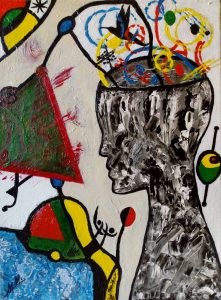May 1, 2020
 More and more disputing parties and attorneys are turning to online dispute resolution (ODR) during extended Shelter In Place, and online mediation is most likely the new “normal,” here to stay. It may be reassuring to know that this is not a new trend, and the platform for ODR has been in development and use for many years.
More and more disputing parties and attorneys are turning to online dispute resolution (ODR) during extended Shelter In Place, and online mediation is most likely the new “normal,” here to stay. It may be reassuring to know that this is not a new trend, and the platform for ODR has been in development and use for many years.
Colin Rule has been a pioneer in the field of ODR for over 25 years, and we first met him in the early 2000’s when he was developing the Ebay and PayPal dispute resolution systems, the first large scale ODR platform. In this podcast for the American Bar Association, Colin discusses the origins of ODR, and how it has evolved over the years and is now used by courts with matters ranging from traffic citations, to property tax appeals, to family and employment law cases. Ultimately, all ODR technologies evolve out of face-to-face practices because dispute resolution has historically been a face-to-face experience.
At Pactum Factum, we offer “in person” virtual mediations using Zoom. Pactum Factum Principal Lucia Kanter St. Amour is a mediate.com Certified Online Mediator. Unlike the use of algorithms and other technologies used for simple e-commerce disputes, the “in person” aspect of mediation is quite an important psychological component of the process. Research shows that trust in an experienced mediator is the same whether a mediation participant interacts with that mediator via video or face-to-face (i.e. physically in the same room). After some pre-mediation preparation, we join the meeting as a group for the initial joint session, and then enable Zoom Breakout Rooms (or not – we have other options) for the private caucusing. The beauty of online mediation is it’s versatility: it can be scheduled in smaller chunks than the traditional “one big day” of brick and mortar mediation, and we can blend various modalities throughout the process. For more information about online mediation, visit our Forms and FAQ’s pages.
Lucia Kanter St. Amour, Pactum Factum Principal
Mar 1, 2020
 Does Shelter In Place make you feel like a prisoner? In game theory, the prisoner’s dilemma is a famous example of why two completely “rational” individuals fail to reach an equilibrium point (unless they figure out how to cooperate). It is a paradox in decision analysis demonstrating that when two individuals act in their own self-interests, they do not produce the optimal outcome. The typical prisoner’s dilemma is set up in such a way that both parties are encouraged to choose to protect themselves at the expense of the other participant.
Does Shelter In Place make you feel like a prisoner? In game theory, the prisoner’s dilemma is a famous example of why two completely “rational” individuals fail to reach an equilibrium point (unless they figure out how to cooperate). It is a paradox in decision analysis demonstrating that when two individuals act in their own self-interests, they do not produce the optimal outcome. The typical prisoner’s dilemma is set up in such a way that both parties are encouraged to choose to protect themselves at the expense of the other participant.
The classic prisoner’s dilemma is set up as follows: Two suspects, A and B, are arrested by the police. The police have insufficient evidence for a conviction, and having separated both prisoners, visit each of them and offer the same deal: if one testifies for the prosecution against the other and the other remains silent, the silent accomplice receives the full 10-year sentence and the betrayer goes free. If both stay silent, the police can only give both prisoners 6 months for a minor charge. If both betray each other, they receive a 2-year sentence each. Each prisoner must make a choice – to betray the other, or to remain silent. However, neither prisoner knows for sure which choice the other prisoner will make. What will happen?
If reasoned from the perspective of the optimal outcome for the group (the two prisoners), the correct choice would be for both prisoners to cooperate with each other, as this would reduce the total jail time served by the group to one year total. Any other decision would be worse for the two prisoners considered together. When the prisoners both betray each other, each prisoner achieves a worse outcome than if they had cooperated
Prisoner’s Dilemma is also an example of a type of Nash Equilibrium, discussed in our February 2018 blog entry.
Take-away: In our quarantine situation (and in negotiations in general), we can achieve a better outcome for all parties by cooperating. This may mean surrendering options and behaviors that would especially benefit each of us individually. In life and in negotiation, ask yourself what your goal is: is it to “beat” the other side? Is it to optimize profits? Is it to build a relationship? Consider the ultimate goal, and assess what “cooperation” means in promoting that goal, and how to communicate it.
Nov 1, 2019
 Once people own something (or have a feeling of ownership) they irrationally overvalue it, regardless of its objective market value. People feel the pain of loss twice as strongly as they feel pleasure at an equal gain, and they fall in love with what they already have and prepare to pay more to retain it. For example, scientists randomly divided participants into buyers and sellers and gave the sellers coffee mugs as gifts. Then they asked the sellers for how much they would sell the mug and asked the buyers for how much they would buy it. Results showed that the sellers placed a significantly higher value on the mugs than the buyers did.
Once people own something (or have a feeling of ownership) they irrationally overvalue it, regardless of its objective market value. People feel the pain of loss twice as strongly as they feel pleasure at an equal gain, and they fall in love with what they already have and prepare to pay more to retain it. For example, scientists randomly divided participants into buyers and sellers and gave the sellers coffee mugs as gifts. Then they asked the sellers for how much they would sell the mug and asked the buyers for how much they would buy it. Results showed that the sellers placed a significantly higher value on the mugs than the buyers did.
A variation of Endowment Effect is IKEA Effect: A cognitive bias in which people place a disproportionately high value on products they partially created. For example, in one study, participants who built a simple IKEA storage box themselves were willing to pay much more for the box than a group of participants who merely inspected a fully built box.
Take-away: Consider the Endowment Effect the next time you are in a sale/purchase negotiation. If you are the seller, it may be difficult for you to objectively assess offers that fall below your personalized value of your [beloved vintage car, the house where you brought home your first baby, etc.]. This is why researching objective standards and norms is so important in planning for a negotiation. If you are the buyer, being aware of endowment effect can help you communicate empathy and build rapport, while expressing the objective market fairness of your offer.
Background on our Cognitive Traps series (not our own original research): Social and cognitive psychologists have been interested for decades in how the brain processes information and what that produces in the outside world in terms of behavior. In the 1970’s, two psychologists from Stanford University (Daniel Kahneman and Amos Tversky) started to study aspects of decision-making: does the rational person made decisions based on innate cost-benefit economic analysis? Their work (called Prospect Theory) created a new discipline of science known as Behavioral Economics, which earned them the Nobel Prize in Economics in 2002 (Tversky had died in 1996, so technically the prize only went to Kahneman at the time it was bestowed). According to behavioral economics, the Rational Person theory doesn’t take into account all the reasons people behave the way they do. People make decisions relative to a reference point, and that reference point is the status quo – “where I am now.” Kahneman and Tversky categorized their work into a set of common heuristics: shortcuts that the brain takes so that it can make decisions in fast-moving everyday life. But many of these heuristics can also act as cognitive traps in a negotiation, if you aren’t aware of them. Endowment Effect is one of them.
Lucia Kanter St. Amour, Pactum Factum Principal
Jun 1, 2019
 What was really going on in the “Crazy Rich Asians” Mahjong scene (film based upon international best selling novel by Kevin Kwan), and what it can teach us about communication, rapport building, leverage (and whether to use it), negotiation, strategy, and cooperation:
What was really going on in the “Crazy Rich Asians” Mahjong scene (film based upon international best selling novel by Kevin Kwan), and what it can teach us about communication, rapport building, leverage (and whether to use it), negotiation, strategy, and cooperation:
As background, Watch the scene here
Read the article here
Jan 1, 2019
 Reciprocity Effect is extremely alluring, and one of the most powerful and difficult cognitive traps to resist. It’s very simple: if someone does something for you, you’ll naturally want to do something for them.When you offer something for free, people feel a sense of indebtedness towards you.For example, researchers tested how reciprocity can increase restaurant tipping. Tips went up to 3% when diners were given an after-dinner mint. Tips went up to 20% if, while delivering the mint, the waiter paused, looked the customers in the eye, and then gave them a second mint while telling them the mint was especially for them. In another study, 11% of people were willing to donate an amount worth one day’s salary when they were given a small gift of candy while being asked for a donation, compared to 5% of those that were just asked for the donation. Think of a recent invitation to a friend’s house for dinner where your friend insists that you need not bring anything other than yourself; it’s almost impossible to just show up at the door empty-handed without bearing some contribution, such as a bottle of wine.
Reciprocity Effect is extremely alluring, and one of the most powerful and difficult cognitive traps to resist. It’s very simple: if someone does something for you, you’ll naturally want to do something for them.When you offer something for free, people feel a sense of indebtedness towards you.For example, researchers tested how reciprocity can increase restaurant tipping. Tips went up to 3% when diners were given an after-dinner mint. Tips went up to 20% if, while delivering the mint, the waiter paused, looked the customers in the eye, and then gave them a second mint while telling them the mint was especially for them. In another study, 11% of people were willing to donate an amount worth one day’s salary when they were given a small gift of candy while being asked for a donation, compared to 5% of those that were just asked for the donation. Think of a recent invitation to a friend’s house for dinner where your friend insists that you need not bring anything other than yourself; it’s almost impossible to just show up at the door empty-handed without bearing some contribution, such as a bottle of wine.
Take-away: Remember the reciprocity principle the next time you prepare for a negotiation: a smart negotiator will have prepared a concession plan, understanding that if they make a concession, the Reciprocity Effect will make it almost irresistible for you to make a concession in return. Some pre-planned concessions could be decoys – that is, the other party is not truly giving up something of value. You can employ the same strategy yourself. Test the legitimacy of concessions made by the other side before Reciprocity kicks in on your part.
Background on our Cognitive Traps series (not our original research): Social and cognitive psychologists have been interested for decades in how the brain processes information and what that produces in the outside world in terms of behavior. In the 1970’s, two psychologists from Stanford University (Daniel Kahneman and Amos Tversky) started to study aspects of decision-making: does the rational person made decisions based on innate cost-benefit economic analysis? Their work (called Prospect Theory) created a new discipline of science known as Behavioral Economics, which earned them the Nobel Prize in Economics in 2002 (Tversky had died in 1996, so technically the prize only went to Kahneman at the time it was bestowed). According to behavioral economics, the Rational Person theory doesn’t take into account all the reasons people behave the way they do. People make decisions relative to a reference point, and that reference point is the status quo – “where I am now.” Kahneman and Tversky categorized their work into a set of common heuristics: shortcuts that the brain takes so that it can make decisions in fast-moving everyday life. But many of these heuristics can also act as cognitive traps in a negotiation, if you aren’t aware of them. Reciprocity is one of them.’
Lucia Kanter St. Amour, Pactum Factum Principal
 More and more disputing parties and attorneys are turning to online dispute resolution (ODR) during extended Shelter In Place, and online mediation is most likely the new “normal,” here to stay. It may be reassuring to know that this is not a new trend, and the platform for ODR has been in development and use for many years.
More and more disputing parties and attorneys are turning to online dispute resolution (ODR) during extended Shelter In Place, and online mediation is most likely the new “normal,” here to stay. It may be reassuring to know that this is not a new trend, and the platform for ODR has been in development and use for many years.

 Once people own something (or have a feeling of ownership) they irrationally overvalue it, regardless of its objective market value. People feel the pain of loss twice as strongly as they feel pleasure at an equal gain, and they fall in love with what they already have and prepare to pay more to retain it. For example,
Once people own something (or have a feeling of ownership) they irrationally overvalue it, regardless of its objective market value. People feel the pain of loss twice as strongly as they feel pleasure at an equal gain, and they fall in love with what they already have and prepare to pay more to retain it. For example, 
 Reciprocity Effect is extremely alluring, and one of the most powerful and difficult cognitive traps to resist. It’s very simple: if someone does something for you, you’ll naturally want to do something for them.When you offer something for free, people feel a sense of indebtedness towards you.For example,
Reciprocity Effect is extremely alluring, and one of the most powerful and difficult cognitive traps to resist. It’s very simple: if someone does something for you, you’ll naturally want to do something for them.When you offer something for free, people feel a sense of indebtedness towards you.For example,